ENHANCING SCHOOL IMPROVEMENT REFORM IN NEW SOUTH WALES (AUSTRALIA)



HIGHLIGHTS





HIGHLIGHTS


This study is part of the OECD’s efforts to support its Member countries as they design and implement education policies, grounding their efforts on evidence and using multidisciplinary tools and approaches to enhance stakeholder engagement. Drawing on its analytical knowledge base and network of international experts, the OECD provides tailored support to help develop sustainable improvements in teaching and learning. That support generally consists of an initial assessment to understand policies in their context, followed
by engagement with key education stakeholders to help shape or review the development of implementation strategies.
This brochure gives a summary of the analysis and conclusions that can be found in the main report: “Enhancing school improvement reform in New South Wales (Australia)”, available at: www.oecd.org and https://doi.org/10.1787/36135b5ben
The New South Wales (Australia) (hereafter NSW) Government is committed to providing an education system that prepares learners for rewarding lives and lifelong learning. To help realise this goal, the NSW Department of Education (DoE) initiated several reforms in recent years. The Local Schools Local Decisions (LSLD) reform, announced in 2011, aimed to increase the authority of local schools to make decisions about how they deliver education to students (NSW Government, 2020[5]). The School Success Model (SSM) reform, announced in 2020,
aimed to deliver high-quality, tiered schoolimprovement support to all NSW public schools (NSW Government, 2021[1]).
However, realising successful educational change is a complex, multifaceted process that, simply said, is hard to do (Kuipers et al., 2014[11]; Schleicher, 2018[12]; Viennet and Pont, 2017[13]) – and the NSW school improvement journey is no exception to this. The DoE considered it important to build on lessons learned from past reforms and seek
feedback from the education profession and other stakeholders to further enhance the design of its school improvement reform and determine the right conditions to implement it successfully.
The DoE invited the OECD Implementing Education Policies project team to contribute to this effort.
The OECD team carried out its assessment of the design and implementation of the DoE school improvement reform in two phases. The first phase (January to August 2022) consisted of an in-depth assessment of the design of the SSM and its policy coherence with other DoE policies and programmes. Using the OECD (2020[14]) Implementing Education Policies framework as a lens for analysis, the team then undertook an extensive desk study of DoE policies and studies, and conducted interviews with DoE officers and selected former school principals. This analysis allowed the team to gain an in-depth understanding of the SSM and the broader education context and policy landscape in New South Wales.
In the second phase of the project (August to November 2022), the team continued assessing the
Drawing on OECD’s international knowledge base and expertise, this report assesses and offers concrete recommendations for enhancing the design and implementation of the DoE school improvement reform, as well as the larger NSW education reform agenda.
design and policy coherence of the SSM, expanding on this analysis by exploring in greater depth the conduciveness of the environment in which the school improvement reform is being implemented. This phase involved continued desk study, as well as interviews and focus group discussions with a wide range of education stakeholders from different levels of the NSW education system, for which the OECD team travelled to New South Wales on an eight-day visit in September 2022.
Finalised in December 2022, this report includes concrete recommendations for enhancing the design and implementation of the DoE school improvement reform, as well as the larger NSW education reform agenda.
“The OECD undertook a desk study and consulted through focus group discussions and meetings with representative groups, education partners, school staff and education support office department staff to expand the OECD’s knowledge of the NSW public education system. This has supported the development of recommendations on how to support continuous improvement and school excellence in the NSW public school system.”

The NSW Department of Education is the largest provider of public education in Australia, with responsibility for delivering public education to a diverse range of communities across the state. It is responsible for the delivery and co-ordination of early childhood education, primary schools, secondary schools, and vocational, adult, migrant and higher education (NSW Government, 2022[28]).
The three main education providers in New South Wales are the State Government (70%), Catholic Education (19%) and the Independent schools
sector (11%). Government schools are often called state schools or public schools (NSW Government, 2021[18]).
The NSW Education Standards Authority (NESA) is responsible for curriculum, assessment, school registration and teacher quality in all NSW schools. It is an independent regulatory body with statutory authority that reports to an independent governing board and the NSW Minister for Education and Early Learning (NSW Government, 2022[30]; NSW Education Standards Authority, 2022[31]).
11% Independent schools sector
70% State Government (state/public schools)
802 182 students enrolled in NSW public schools, including 5 872 students in specialist schools for students with moderate-to-high learning and support needs
19% Catholic Education
There were approximately 92 000 public school teachers, permanent, temporary and casual, with 29 300 primary teachers and 23 100 secondary teachers in permanent positions
Source: NSW Government (2021[18]) , Schools and students: 2021 statistical bulletin, https://data.cese.nsw.gov.au/data/dataset/ schools-and-students-statistical-bulletin/resource/0d101b76-1bf5-436b-9aee-83567ad88899 (accessed on 6 September 2022).
In 2018, the mean performance of 15-year-old NSW students on the OECD Programme for International Student Assessment (PISA) was similar to the OECD average in mathematics and reading, but significantly above the OECD average in science (Thomson et al., 2019[2]; OECD, 2019[3]; ACARA, 2020[55]).
However, the performance of NSW students was below the national average for Australia in all subjects, and it has been gradually declining in each PISA cycle. Between PISA 2000 and PISA 2018, five Australian jurisdictions showed declines in student performance. New South Wales had the largest
decline (45 points), equivalent to around one-and-athird years of schooling (ACARA, 2020[55]).
The data also point to significant equity challenges. PISA, for example, showed significant differences in the performance of 15-year-olds in rural areas, nonurban areas and major cities (Figure 2). Similarly,
the results of the 2022 National Assessment Program – Literacy and Numeracy (NAPLAN) showed that students in rural schools continue to underperform compared to their metropolitan counterparts. Challenges are even more pronounced for Aboriginal and Torres Strait Islander students in these areas (Thomson et al., 2020[57]).
Note: The blue line indicates the percentage of students attaining the National Proficient Standard (Level of PISA 3 or above). Source: Thomson, S., De Bortoli, L., Underwood, C., & Schmid, M. (2020), PISA 2018: Reporting Australia’s Results. Volume II Student and School Characteristics, Australian Council for Educational Research, https://research.acer.edu.au/ozpisa/49 (accessed on 10 December 2022).
approximately 20 public schools in a specific region, although the numbers may be lower in remote and non-urban areas (NSW Government, 2022[52]).
New South Wales has an extensive school improvement support and accountability structure. School principals are supported in their school’s improvement efforts by the Directors, Educational Leadership (DELs). DELs have a key strategic role in supporting the continuous improvement of principals, as are they the principals’ line managers. DELs and principals engage in regular professional dialogue, with the DELs also guiding and validating the school’s planning, self-assessment and reporting processes. In 2021, there were 113 DELs in New South Wales, each responsible for a cluster of
In addition to the DELs and the capacity-development programmes offered by the DoE’s School Leadership Institute, the DoE has established a Principal School Leadership and Principal Coach Mentor team (a total of 72 officers in 2022). These officers work in a complementary manner with the DELs to help principals develop the mindset and capabilities needed to create sustainable leadership practices and an effective, healthy school. This includes working with principals to facilitate the development of an evidence-based Strategic Improvement Plan and facilitating the external validation process (NSW Government, 2022[53]).
“NSW has an extensive school improvement support and accountability structure.”
The DoE also provides some pedagogical and curriculum-programming support to schools, which is to increase with the rollout of the new curriculum. School leaders and teachers can also seek support
from subject-specific networks and associations, which are often informal and not mandated. Schools can also seek additional types of support from the private sector (NSW Government, 2020[5]).
across schools by formalising system targets and priorities, lifting capability and sharing evidence-led support through a new tailored framework to support schools. The objectives of the SSM reform were to:
The NSW Government is committed to an education system that prepares its learners for rewarding lives and lifelong learning. To help achieve this goal, the DoE has initiated several reforms in recent years. In August 2011, it announced the Local Schools Local Decisions (LSLD) reform, which aimed to increase the authority of local schools to make decisions about how they deliver education to students. In December 2020, it announced that the LSLD would be replaced by the School Success Model (SSM) reform, which aimed to deliver highquality, tiered school-improvement support to all NSW public schools (NSW Government, 2021[67]).
The SSM set out to achieve a better balance of autonomy and accountability for student improvement
· develop quality-assured, evidence-led support around the needs of each school and its students to lift attendance, achievement and well-being
· share accountability for student improvement by putting in place clearer targets, lifting capability and sharing what works best
· free up more time for teachers, principals and school staff to spend on activities that improve student outcomes around teaching, learning and leading (NSW Government, 2022[68]).
The SSM detailed a range of ambitious targets for schools and reflected a shared commitment to improvement. Schools work towards realising these by setting annual targets for achievement (Table 1).

“The School Success Model (SSM) reform aimed to deliver high-quality, tiered schoolimprovement support to all NSW public schools.”
NAPLAN Increase the proportion of public school students in the top two NAPLAN bands for literacy and numeracy by 15%.
Aboriginal Education Increase the proportion of Aboriginal students attaining the Higher School Certificate (HSC) while maintaining their cultural identity by 50%.
HSC Increase the proportion of students’ HSC results in the top two achievement bands from 34.6% (2018) to 35.7% (2023).
Attendance Increase the proportion of public school students attending school at least 90% of the time from 79.4% (2018) to 82% (2023) in primary schools and from 64.5% (2018) to 70% (2023) in secondary schools.
Student growth (equity)
Increase the proportion of public school students achieving expected growth in reading and numeracy from 62.3% (2018) to 66.4% (2023).
Pathways Increase the proportion of recent school leavers participating in higher education, training or work from 89.6% (2018) to 91.6% (2023) and 93.6% (2028). Increase the proportion of students continuing to Year 12 from 73.9% (2018) to 76.7% (2023).
Individual school targets in place from 2020.
Individual school network targets in place from 2020 (percentage uplift). Individual school student uplift in place that underpins the network target.
Individual school targets in place from 2021.
Individual school targets in place from 2021.
Individual school targets in place from 2021.
A measure will be selected with a baseline established for each high school in 2022 and with targets set for every high school from 2023.
Source: NSW Government (2022[68]) , School Success Model, https://education.nsw.gov.au/public-schools/school-success-model/ school-success-model-explained#/asset6 (accessed 6 June 2022).
All public schools were to be provided with quality tools, resources and targeted advice to help all students achieve their potential. The online Universal Resources Hub aimed to provide school staff with a central place to access quality-assured teaching, learning and school improvement resources to use and share. Furthermore, the SSM aimed to reduce the administrative burden on schools through a range of initiatives. These included the Quality Time Action Plan that aimed to simplify and modernise administrative processes and practices to ensure teachers and school leaders can focus on supporting quality teaching and learning, improving school operations and enhancing student outcomes (NSW Government, 2021[69]).
The School Support Delivery Framework is another key component of the SSM. This Framework outlines three types of support to help schools in their school improvement effort:
· Universal support refers to self-service support of curated and quality-assured, evidence-based
resources available to all schools through the Universal Resources Hub.
· Guided support refers to targeted guidance by DELs and/or other specialists to identify, discuss and support the implementation of appropriate universal resources. Guidance is provided for specific areas identified by the system and/or schools, such as reading and numeracy.
· Strategic support refers to intensive and customised support delivered by dedicated specialists in collaboration with the school’s leadership and DELs, provided in specific areas identified by the system and/or schools. The greater the need, the greater the level of support given to schools. Support is delivered to schools across priority learning areas, such as reading and numeracy, attendance, Aboriginal HSC attainment and financial management, among others (NSW Government, 2022[68]).
There is increasing awareness among policymakers in OECD Member countries that reforms or policy initiatives do not succeed or fail on their own merits, that their success is dependent upon the processes of both design and implementation, with implementation often receiving scant attention compared to the amount of time and other resources devoted to design (OECD, 2020[14]; May, 2015[70]; Peckham, Hudson and Hunter, 2021[71]; McConnell, 2018[72]). However, research evidence shows there is still much to gain from devoting more attention to the design of policies and/ or greater scrutiny of policy proposals (Viennet and Pont, 2017[13]; May, 2015[70]; Fullan, 2011[73]).
The School Success Model had several strong and promising design components and underlying policy actions to build on.
The SSM had several strong and promising design components and underlying policy actions features that are in line with international research evidence and best practices, but that importantly are tailored to the NSW context. One such example is the School Support Delivery Framework that is at the core of the SSM. Through this Framework, support is provided to those schools most in need of it.
Faulty or less optimal policy design may stem from many causes, including (among others): a failure to clearly define and provide a consistent and convincing narrative on the rationale, logic and objectives of the policy; a lack of or limited engagement with key stakeholders in the design of the policy; overly optimistic expectations; and a lack of policy coherence with other related policies and programmes. The section below discusses these and other factors influencing the design and implementation of the SSM, starting with general reflections on its design and then offering concrete recommendations for improvement.
Other examples include:
· the Universal Resources Hub, which provides access to a wide range of quality-assured teaching, learning and school improvement resources.
· the ongoing engagement with universities to support the development of relevant resources and support professional learning.
· the Quality Time Action Plan, which focuses on freeing up more time for teachers, school leaders and school staff.

Furthermore, the drive for results and professionalism of the DoE workforce are clear strengths to support successful implementation of the DoE school improvement reform and NSW’s larger reform agenda.
The rationale, logic and overarching goal of the school improvement reform would benefit from further clarification.
A challenge noted by the OECD team was the lack of a clearly defined and communicated rationale for the SSM reform (i.e. why it is needed). The rationale, logic and overarching goal of the school improvement reform would benefit from further clarification. The OECD team’s interviews with school leaders and teachers revealed that the SSM was not well known. Another challenge was the lack of consistency in the narrative across different documents and resources.
In the SSM, as well as in various other DoE policy documents, little reference was made to the new school curriculum which may not be as successful without a clear rationale and link with the SSM. The SSM aims to empower all NSW public schools to make sustainable improvements in student learning and well-being. To help schools put the new curriculum into practice and to successfully implement it, it is very important to clearly link the curriculum with the SSM.
It was clear from stakeholder interviews that the school improvement reform should be considered vital to help deliver the curriculum to empower all schools to ensure that “all students receive an education that provides them with a solid foundation for life, preparing young people to make a productive contribution to our society” (NSW Education Standards Authority, 2022[90]). This not only responds to the vision and goals set out in the Alice Springs (Mparntwe) Education Declaration (Education Council, 2019 [22]), it is also at the heart of what it means to be a teacher or school leader and could serve as a major driver for those aspiring to join the profession.
and programmes had been given shape primarily through a top-down approach, sometimes with little input from the education profession. School leaders and teachers, as well as several DoE officers, were quite vocal about how this has hindered successful implementation of these policies and services. In line with a growing trend among OECD Member countries (OECD, 2020[75]; OECD, 2018[118]), they expressed an interest in adopting a broader view that integrates bottom-up and top-down activities and incorporates stakeholder engagement, building trust, systems thinking, and organisational learning to identify systematic problems and explore alternative solutions.
The review also identified an apparent tendency to adopt a linear logic in designing these policies and overly optimistic expectations of how quickly SSM interventions and school improvement processes would influence sustainable improvements in teaching and student learning. There was also concern about the large volume of DoE policies and the often short time frame in which teachers and school leaders are expected to implement them.
Although many school leaders and teachers supported the use of targets for guiding their school improvement efforts, several shared concerns about the practice of annual targets, noting that it often takes more than one year to make sustainable improvements in student learning.
Limited initial stakeholder engagement hindered successful policy design and implementation.
Involving teachers, school leaders and other education stakeholders in the design of a new policy can give them a strong sense of ownership and strengthen their confidence in the change process (Schleicher, 2018[12]). Early on, the OECD team identified lack of stakeholder engagement as an area for improvement for the SSM, but recognised that this was partly due to the COVID-19 pandemic, which limited engagement with the education profession.
A review of DoE policy documentation and interviews with DoE officers, school leaders and teachers suggested that, over the last decade, several policies
Caution is advised regarding overoptimistic expectations when (re-)defining the rationale and logic of the school improvement reform.
“Two-way communication provides an important channel for building mutual agreement between stakeholders.”
Once the pressures on the system due COVID-19 had diminished, the DoE was quick to act on the OECD team’s initial feedback on this issue. It committed to a strong consultation process and invited educators across New South Wales to help review the design of the SSM, with a series of stakeholder forums in late 2022 and early 2023. Invited to complement these efforts, the OECD team held focus group discussions and interviews with school leaders, teachers and other education stakeholders in September 2022 to learn their views on the SSM and help identify strengths and areas for improvement.
There is a need for enhanced two-way communication and stakeholder engagement in the implementation process. Two-way communication provides an important channel for building mutual agreement between stakeholders, gaining public support, fostering ownership of a new policy and ensuring support for its implementation (Schleicher, 2018[12]; Darling-Hammond et al., 2020[108]).
A “common language” can help to bridge the worlds of policy and practice.
The DoE’s use of terminology may require further consideration, as it seemed to create some challenges in terms of stakeholder engagement and communication with schools, parents and other stakeholders. For example, in the language used to describe the SSM as well as other DoE policies, there is much emphasis on terms such as “corporate”, “client”, “accountability”, “targets” and “expected growth”. This language seems far removed from the world of teaching and 21st century learning, and the evidence suggests that it may have distanced some members of the NSW education profession from the world of policy.
There is a need for continued focus on supporting school development, promoting shared accountability and reducing administrative burden.
There is a wealth of research evidence indicating the benefits of collecting and using quality data and information to hold schools to account for the quality of education, and support improvement efforts (OECD, 2019[121]; OECD, 2013[49]; Burns and Köster, 2016[101]). But research evidence also cautions about potential unintended consequences if school principals, teachers and system leaders concentrate too much on the measures used to hold schools accountable. This may include an excessive focus on
teaching students the specific skills that are tested, narrowing the curriculum and focussing more on students near the proficiency cut score (Copp, 2018[122]; Ro, 2019[123]; UNESCO, 2015[124]; Darling-Hammond, 2020[125]; OECD, 2013[49]). In fact, some unintended consequences have been reported in New South Wales. For example, some sources have pointed to risks of the NAPLAN results narrowing the curriculum and restricting pedagogy in NSW classrooms. These findings predate the introduction of system- and school-level targets, which suggests a need for continued monitoring of unintended consequences.
The stakeholder interviews conducted by the OECD team suggest that many school leaders, teachers and other education stakeholders are in fact supportive of the use of system- and school-level targets to help schools identify areas for improvement. That said, however, the desk study and some interviewees pointed to several issues of concern:
· First, although the SSM targets for Aboriginal education, attendance, student growth, postschool destinations, NAPLAN and HSC aim to acknowledge a wide view of education quality, several interviewees noted the risk that these student performance targets may still dominate perceptions of what a good or successful school entails in the NSW context. The various stakeholder interviews suggested that this may in fact be happening in some schools, with what seems to be a particular focus on increasing student performance on the top two NAPLAN bands.
· Second but related, several stakeholders noted the risk of school principals feeling pressured by the system to “deliver quick fixes” or “chase the numbers”. For example, several interviewees noted the risk that school principals – in particular those with less experience – might feel pressured to focus much effort on helping a few students increase their student performance to make the top two NAPLAN bands, rather than making sustainable improvements in teaching and the learning of all students across the full breadth of the curriculum.
· Many interviewees also noted their concerns about the focus on achieving yearly targets, rather than seeing school improvement as an “improvement journey” that may take a few years before sustainable results are achieved. Schools may, in fact, face an implementation dip as they move forward, and that complicates the practice of yearly targets.
As noted in the Curriculum Review (Masters, 2020[65]), it is essential that education assessment and evaluation arrangements promote deep and rich learning experiences across the breadth of the new curriculum – and not unintentionally distort the educational process. The review of the NSW school curriculum calls for far-reaching change and innovation in the teaching and learning process from Kindergarten to Year 12. The longterm vision is “for a curriculum that supports teachers to nurture wonder, ignite passion and provide every young person with knowledge, skills and attributes that will help prepare them for a lifetime of learning, meaningful adult employment and effective future citizenship” (Masters, 2020, p. xi[65]).
Research evidence shows that administrative burden and “red tape” can have a negative impact on both organisational performance and staff outcomes (George et al., 2021[129]; Nielsen et al., 2017[130]; OECD, 2010[131]; European Commission, 2017[132]). The final evaluation report of the Local Schools Local Decisions reform concluded that the “Reducing Red Tape” reform area of the LSLD had in fact achieved the reverse outcome, with additional compliance requirements, administration, data collection and reporting responsibilities (NSW Government, 2020[5]). Anecdotal evidence indeed suggests that the administrative burden may have had a negative impact on the willingness of some school leaders and teachers in New South Wales to experiment and innovate in their practice, and it may have contributed to some of them leaving the profession.

· The SSM or following DoE school improvement reform’s rationale, logic and overarching goal would benefit from further clarification. A challenge noted by the OECD was the lack of a clearly defined and communicated rationale for the SSM reform i.e. “why” it is needed. It should provide an inspiring vision for change and a convincing narrative that explains how the different interventions (together with those of other DoE policies and programmes) could best enable the realisation of this purpose. Therefore, the DoE should:
◦ Consider its school improvement reform as a vital reform to help deliver the curriculum – i.e. empower all schools to ensure that “all students receive an education that provides them with a solid foundation for life, preparing young people to make a productive contribution to our society” (NSW Education Standards Authority, 2022[90]). Such an inspiring vision for change (which may require further development, see below) is arguably at the heart of what it means to be a teacher or school leader and could serve as a key driver for change.
◦ Continue to engage in a strong consultation process with school leaders, teachers, Directors, Educational Leadership (DELs), “delivery bodies/ partners”, teacher unions, principal associations, and other education stakeholders to learn their views and draw from their expertise to help enhance the design of the reform and underlying policy actions; thereby diminishing the risk of overoptimistic expectations and help define viable solutions. There are several good examples of such stakeholder engagement on policies with the education profession to build on for the design and implementation of the school improvement reform, as well as other current and future DoE policies and programmes.
◦ Recognise the “delivery bodies/ partners”, e.g. the NSW Education Standards Authority (NESA) and the DoE School Leadership Institute, as well as the clarification of their roles and responsibilities. This would seem vital for the successful implementation of the reform, and that of other policies and reforms.
◦ Continue to engage the education profession, DELs, delivery partners, teacher unions, principal associations, students and parents, and other stakeholders in monitoring progress and receiving feedback on the implementation of the school improvement reform and underlying policy actions. This should include seeking the views of and engaging with those schools and educators that are on “a journey towards excellence” and those that are most in need of support.
· Develop a communication strategy that promotes a consistent and cohesive narrative around the reform that explains “why” and “how” different policy actions are important for realising its objectives and overarching vision for change
· Carefully consider the use of language/ terminology when developing the communication strategy to ensure that all policy documents and media outputs present consistent vocabulary that bridges the worlds of policy makers, educators, and education stakeholders.
· Although there is need for further emphasising school improvement as a collective endeavour in the reform, the emphasis on providing targeted support to schools, promoting shared (professional) accountability and reducing the administrative burden and red tape (i.e. freeing up time) are strengths that should be maintained and built on
· Stakeholder consultations on the system- and school-level targets were expected to result in the decision to have them remain part of the DoE school improvement reform, given the general support of the use of the targets for guiding school improvements. However, some amendments to the system- and schoollevel targets should be considered to ensure schools are supported and recognised for responding to equity and well-being concerns in their student populations. Also, the emphasis placed on annual target setting is an issue for reconsideration
· In addition, continue monitoring whether the school-level targets lead to unintended consequences to inform possible further adjustments to the school improvement reform and/or other DoE policies and programmes.
· The DoE and the NESA should – as intended, but urgently – engage the education profession in a dialogue on the implications of the new curriculum on a range of matters as identified by the Curriculum Review These include assessment and reporting (the National Assessment Plan – Literacy and Numeracy (NAPLAN), the Record of School Achievement and the Higher School Certificate), pedagogical practices and teacher workload, and the School Excellence Framework, which should include a discussion on the systemand school-level targets.
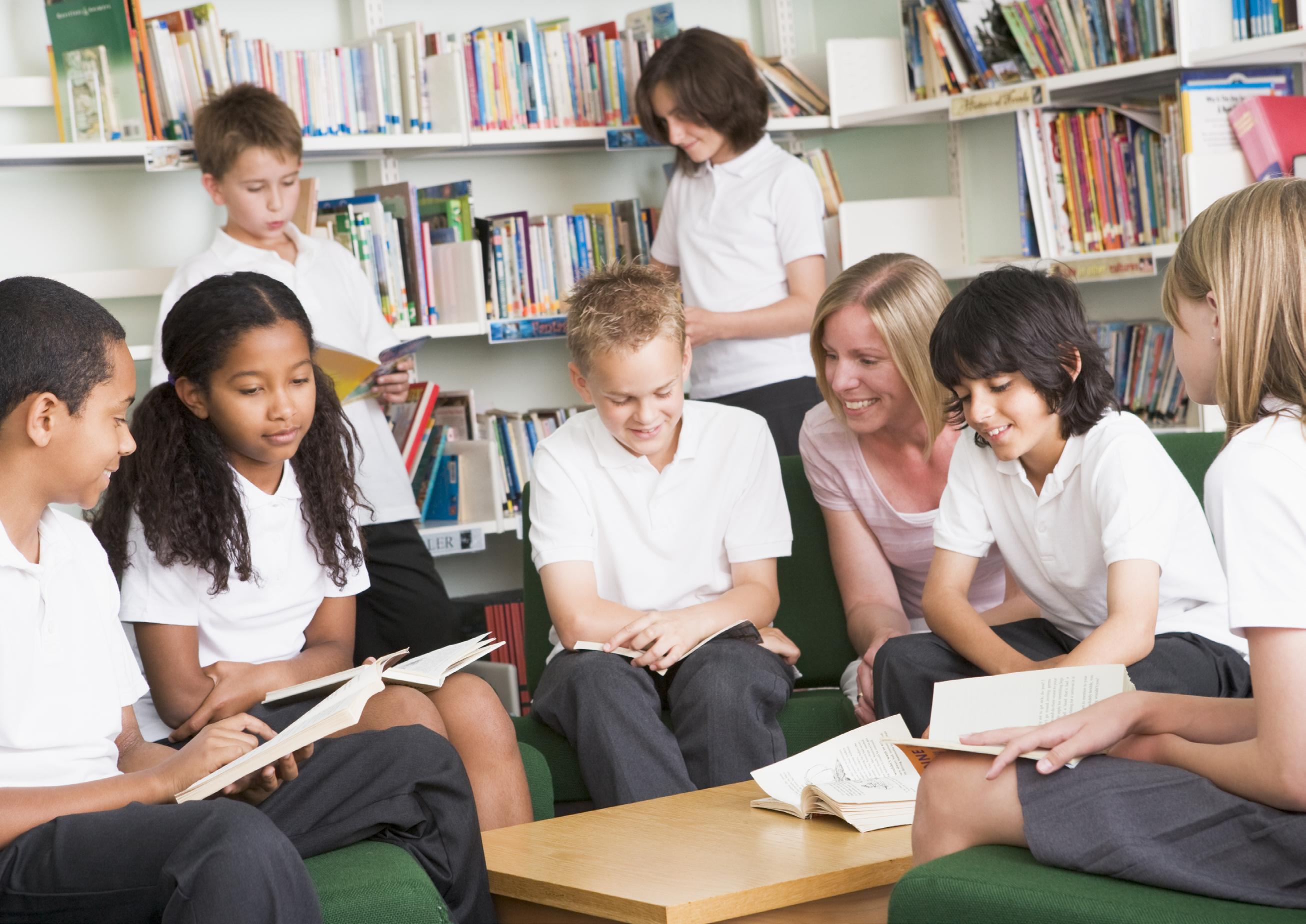
Following the general reflections on the design of the DoE school improvement reform, this section offers a detailed review of the components and policy actions of the SSM. The analysis shows that there is scope to build on the strong and promising design components of the SSM, to expand the reform and underlying policy actions to establish a more comprehensive strategy that supports the realisation of a vision for change that is still to be clarified. In fact, the DoE was already following up on this recommendation while the OECD team was finalising this report (see Section 4).
As mentioned, the DoE school improvement reform would benefit from a consistent and cohesive narrative that explains why and how different policy actions are important for realising its objectives and the overarching vision for change. The DoE should consider establishing the DoE school improvement reform as a vital step to help deliver the new curriculum. The SSM contains a number of important and promising policy actions. The section below discusses several of these and offers suggestions to further strengthen them. Following that is a discussion of additional policy priorities and actions that should be considered for inclusion in the school improvement reform.

The Universal Resources Hub is a promising policy action to support the NSW education profession in their professional learning and school improvement efforts. The desk review of DoE policies and programmes and the stakeholder interviews highlighted a number of issues to consider in further developing such resources, including the following:
· The OECD team queried the extent to which Hub resources are responding to actual professional
learning needs of school leaders, teachers and other school staff. Interviewees’ responses varied, suggesting there may be scope for improvement.
· The team’s review also suggests that the DoE should ensure better co-ordination and a more strategic approach to developing these learning resources across the different DoE teams, ideally as part of a larger, comprehensive professional learning strategy.
· The school leaders and teachers the OECD team interviewed were all positive about the richness and quality of the teaching and learning resources available in the Hub, but they pointed out that searching through the wealth of resources on the Hub can be very time-consuming and is sometimes unsuccessful.
The School Support Delivery Framework is a promising policy action that can be enhanced to better target support measures.
The Framework aligns with international research evidence and best practices among OECD Member countries, such as Ireland and the Netherlands, as well as partner countries, such as Singapore, that aim to provide tailored support to schools to assist them in their school improvement efforts (Van Twist et al., 2013[119]; Schleicher, 2018[12]; OECD, 2013[49]). It is a promising policy action to respond to the apparent growing equity concerns between schools in New South Wales (Australia).
However, the OECD team found there is a need to further develop and expand the School Support Delivery Framework to ensure that it indeed responds to schools’ needs and offers them the tailored support they need. While school selfevaluation and planning processes and/or external school evaluations are key to helping identify the level and type of support schools need in many OECD Member countries, this isn’t fully the case for New South Wales. Instead, the OECD team learned the categorisation of schools in either the guided support or strategic support categories is done by the DoE, based on an analysis of the system-level
targets, rather than on the school self-evaluation and improvement planning process set out in the School Excellence Framework, with no apparent link to the external validation process.

As mentioned earlier, a clear challenge to schools’ capacity to make sustainable improvements is the large volume of policies and programmes that they are expected to implement, sometimes in short time frames. It would seem essential to not only provide schools with the tailored support they need, but also to make sure that they have the time and space to truly focus on their improvement priorities. This may require someone filtering and “shielding” schools from requests to implement new DoE policies and programmes that are less relevant.
The SSM recognises the importance of freeing up time for teachers, school leaders and school staff.
The DoE should continue to prioritise the Quality Time Action Plan, as well as several other promising initiatives. The evidence strongly supports the importance of freeing up more time for teachers, school leaders and school staff by reducing administrative burden and red tape.
This can ensure that teachers have sufficient time to focus on teaching and students’ learning and wellbeing, which have been impacted by the COVID-19 pandemic. Furthermore, teachers and school leaders need more time to engage in collaborative professional learning, a vital element considering the curriculum reform New South Wales has embarked on.
After these highlights of the important and promising policy actions included in the SSM, the next section focuses on a number of additional priorities and policy actions that should be
The SSM and the School Excellence Policy have a limited focus on equity and student well-being.
International research evidence shows that the highest performing education systems are those that focus on both equity and excellence (OECD, 2019[4]; OECD, 2012[165]; Schleicher, 2021[148]). These systems often identify and provide additional support to the schools that most need it. The OECD team learned of several such strategies that provide disadvantaged schools with support adapted to their specific student population and local context, including the Aboriginal Education Policy (NSW Government, 2022[166]), Footprints to the Future 2020-2030 (NSW Government, 2020[63]), the Rural and Remote Education Strategy (NSW Government, 2021[7]) and the Connected Communities Strategy (NSW Government, 2021[62]). Such programmes are of great importance, as equity challenges are the most significant barriers to student learning in many NSW schools, with different levels of incidence. Excellent practice can be identified and recognised across schools with high, medium and low incidence of students requiring targeted support, and it should be shared to support other schools in their improvement efforts.
Furthermore, the need to support student wellbeing is growing across NSW schools, partly as a result of increased student mental-health issues. The DoE has recognised the need to improve the way it collectively supports student well-being in schools. The SSM can serve an important enabling role in ensuring a “whole school approach” to respond to students’ learning and well-being needs. For this to happen, it is essential to strengthen the focus on equity and student well-being in the SSM and the School Excellence Policy.
There is a need to explicitly integrate the School Excellence Policy in the SSM.
The OECD team was surprised to find that the School Excellence Framework (SEF) (NSW Government,
considered for inclusion in the SSM, as may they inform the design of future DoE policies and programmes and/or its new Strategic Plan.
2022[167]), which is used for school self-evaluation and improvement planning, is not an explicit component of the SSM. The name suggests that the SEF is a model that answers the question of “what is a good school” in the NSW context and supports schools in realising this holistic view of a good or successful school. The OECD team’s interviews with school leaders and teachers corroborated this finding, but also found that they consistently, but incorrectly, assumed that the SEF was part of the SSM.
The school self-evaluation and improvement planning process against the SEF is considered a key tool in the pursuit of excellence or “school success”. Given the interdependence and complementarity of the School Excellency Policy and the SSM, the DoE should consider consolidating them.
The DoE has increasingly recognised school leadership development as a priority, with the establishment of the School Leadership Institute in 2018 (see Box 1) and the recently released School Leadership Development Strategy (NSW Government, 2022[188]) as key milestones. These highlight the vital role of school principals and other school leaders in leading and managing improvement, innovation and change (OECD, 2020[164]; Leithwood and Seashore Louis, 2012[183]; Robinson, Hohepa and Lloyd, 2009[184]; Kools and Stoll, 2016[144]). Their commitment, knowledge and understanding of the new curriculum and learning mindset are essential to innovate and improve teaching and ensure the learning and well-being of all students. The DoE
“The school self-evaluation and improvement planning process against the SEF is considered a key tool in the pursuit of excellence or school success.”
should make school leadership development a key component of school improvement reform. This would likely be appreciated by school leaders, teachers and other education stakeholders, and it could contribute to building trust and gaining their support for the reform.
System leaders also play a pivotal role in promoting a learning culture and shared accountability (Spillane, Hopkins and Sweet, 2018[189]; King Smith, Watkins and Han, 2020[147]; OECD, 2018[118]; OECD, 2015[190]). The DoE should continue to invest in developing the capacity of its meso-level (or mid-level) system leaders and ensure that they have the knowledge, skills and learning mindset – as well as the time and space –to take on their vital role in supporting schools in their improvement efforts.
It is important to move towards a more a strategic approach to professional learning that emphasises collaborative working and professional learning.
There is currently limited recognition of the importance of collaborative working and professional learning. Several important policies,
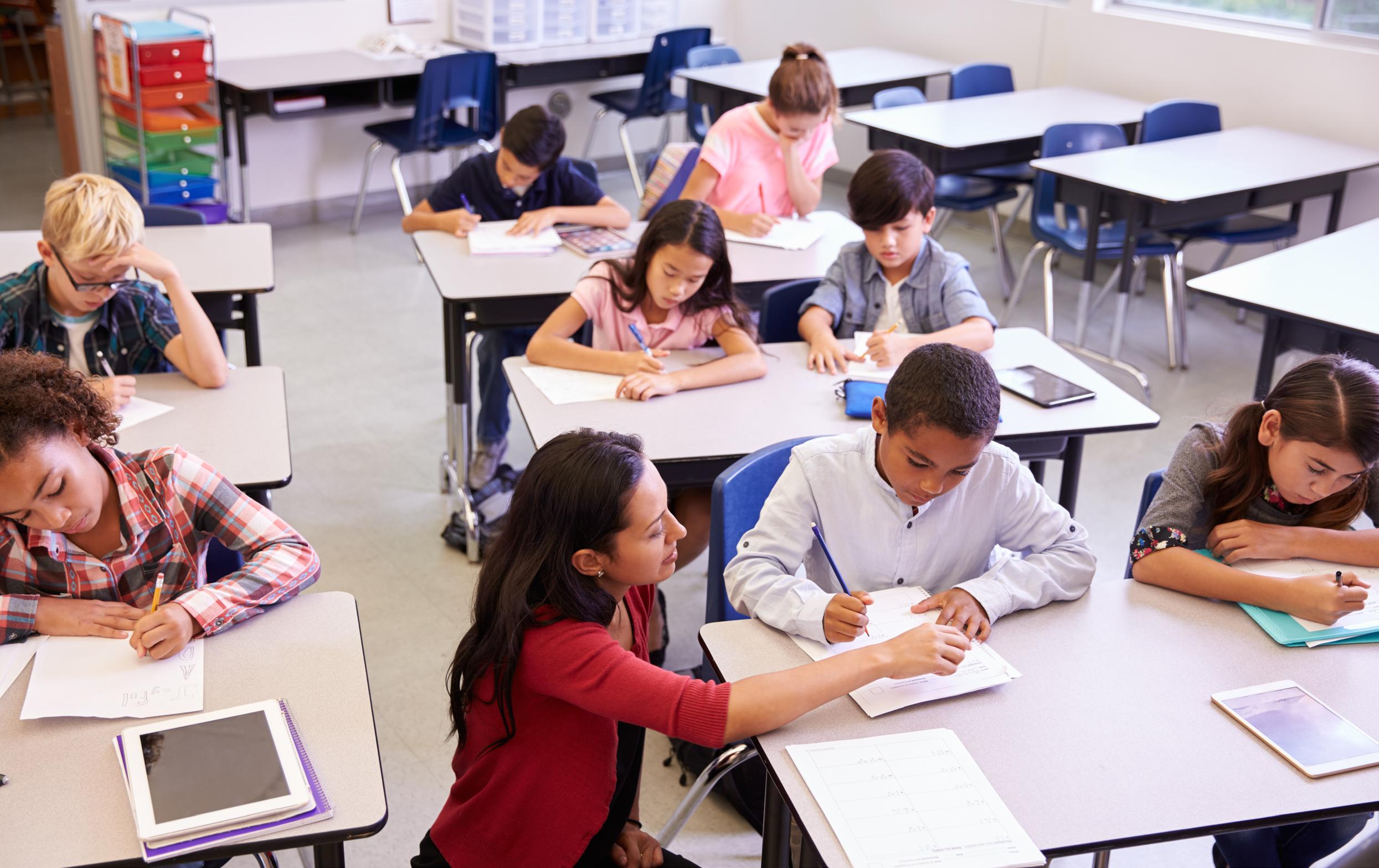
such as the SEF (NSW Government, 2022[167]), the Professional Standards for Teachers (NSW Education Standards Authority, 2022[202]) and the Australian Professional Standard for Principals (AITSL, 2014[185]), emphasise the importance of a learning culture and collaborative working and learning within and between schools. But other policies and programmes, including the SSM, seem less explicit in promoting such collaborative practices. There has been much emphasis placed on the development of online courses and self-learning resources in recent years, but their effectiveness was questioned by several school leaders and teachers the OECD team interviewed and there was a strong appetite for more collaborative professional learning.
The review of the various DoE policies and programmes and interviews with key stakeholders revealed that there is insufficient co-ordination across DoE teams on the different professional learning initiatives. The DoE should ensure a strategic approach to its many professional learning initiatives through the development of a comprehensive DoEwide professional learning strategy.
In 2018, the New South Wales Department of Education established the School Leadership Institute (SLI) to provide leadership development and support for current and future school leaders at key points in their career. The Institute strives to provide evidence-informed, future-focused leadership development programs, resources, research and initiatives for middle and senior school leaders and principals, as well as support and resources for Directors, Educational Leadership (DELs) to shape a future that enables all educational leaders to influence and impact positively on the learning of teachers and students in public schools (see Figure 3).
Teacher leaders with leadership potential
Middle Leaders
Newly appointed head teachers and assistant principals
Senior Leaders
Newly appointed deputy principals
Principals
Newly appointed principals
Directors
Educational Leadership
Supports DELs across the system
Teachers aspiring to middle leadership roles or seeking to enhance their leadership impact
Development Assistant principals and head teachers aspiring to senior leadership roles or seeking to enhance their leadership impact
Development
Deputy principals and assistant principals aspiring to lead a school or seeking to enhance their leadership impact
Development
Principals seeking to enhance their leadership impact or expand their system leadership
Development
DELs seeking resources and opportunities to support leadership development in schools
Since its establishment, the SLI has developed and implemented a steadily growing number of programmes and resources to develop school leadership capacity across the NSW public school system. For more details, please refer to the main report.
Source: NSW Government, (2022[29]), School Leadership Institute, About the School Leadership Institute (nsw. gov.au) (accessed on 22 September 2022).
Building on the strong design components, the DoE should develop a more comprehensive school improvement reform by clarifying and expanding its policy actions that support the realisation of a to-be-clarified vision for change. This includes:
· Ensuring the Universal Resources Hub responds to professional learning needs.
◦ The DoE should continue to involve teachers and school leaders in the design and trial of learning resources, as a key means for ensuring these respond to professional learning needs. In addition, it should regularly assess the learning needs of the education profession, including their use of these online resources.
◦ The DoE should continue to enhance co-ordination across the different DoE teams to develop these learning resources, ideally as part of a larger, comprehensive professional learning strategy.
· Expanding the School Support Delivery Framework to ensure it responds schools’ needs and provides them with the tailored support they need by:
◦ Developing a clear narrative that describes how school self-evaluation, based on the School Excellence Framework (SEF) (not merely the system targets) and a school’s Strategic Improvement Plan (SIP), and the external validation process, are used to identify and allocate schools to the three levels of support available, and how that support is provided. The DoE should consider developing guidelines and other resources for this purpose. The SEF resources are an important means to build on.
◦ The DoE should consider how to link the external validation process with the support provided through the School Support Delivery Framework. It may look towards the example of the Netherlands and consider piloting a riskbased inspection/external validation approach to determine the support to be provided through the School Support Delivery Framework.
◦ The support provided through the School Support Delivery Framework should respond to schools’ improvement needs i.e. the improvement priorities as identified in the schools’ SIP. For this to happen the support offer available needs to cover all areas (and indicators) of the SEF. In addition, schools should be “shielded” from the pressures to implement non-essential, new DoE policies and programmes and allowed the time and space to focus on their improvement priorities and embed these in their organisation and educational practices.
◦ The School Support Delivery Framework should clarify how it supports schools in responding to equity concerns and student wellbeing to ensure a “whole school approach”. Schools and students may need additional, tailored support and/or financial resources and the participation of health and other social services to adequately respond to the needs of disadvantaged students and those with additional learning needs. In addition, the DoE should review the School Excellence Framework and expand it (among others) with a strong focus on equity and student well-being – and make this into a fourth domain; “excellence in equity and student well-being”, in addition to “excellence in learning”, “excellence in teaching”, “excellence in leading”.
◦ The School Support Delivery Framework should consist of a mix of direct support provided to schools by specialists, while emphasising and promoting school-to-school collaborations. For example, if a school’s self-evaluation shows it is “Delivering” on the SEF quality indicator “attendance” it could learn from a school that had a similar starting point and has managed to make the journey from “Delivering” to “Sustaining and Growing” or “Excellence”. Such “scaffolding” is an effective means for mobilising and expanding the school improvement support capacity of the system.
◦ The DoE may look towards internationally successful school-toschool collaboration models, such as the City Challenge in the United Kingdom or Shanghai’s (PRC) EmpoweredManagement programme, for developing and piloting one or more models fitting the NSW context. A question for examination is whether there is a need for different models for schools in urban- and rural areas.
◦ The Directors, Educational Leadership (DELs) have a vital role to play in supporting effective school-to-school collaborations by identifying schools’ strengths – going beyond the data and looking for truly innovative and effective practices to help schools and facilitate school-to-school collaborations.
◦ The effective use of the Universal Resources Hub for scaffolding calls for presenting these resources in line with the SEF domains, indicators and stages of development.
◦ The DoE should also expand the Hub with more research-based examples of effective practice that provide an in-depth insight in the “improvement journeys” of schools and that support scaffolding against the School Excellence Framework.
◦ The DoE should establish a linkage between the School Planning and Reporting Online (SPaRO) and (i) the Universal Resources Hub and (ii) an up-to-date professional learning offer to allow for automated presentation of professional learning programmes/ courses and (self-learning) resources that respond to identified school improvement priorities (see Figure 4).
◦ Similarly, the DoE should consider further developing its software platforms to allow for easy identification of schools that could be matched for school-to-school collaborations. The self-assessment against the SEF indicators and SIP could allow for easy identification of potential schools to learn from.
· The Quality Time Action Plan is a promising policy initiative for freeing up time for the NSW education profession that should continue to be prioritised within the DoE. The DoE should monitor the effectiveness of the action plan in terms of actual – and perceived – workloads and professional learning time, and take additional measures as needed.
· Given their strong interdependence and complementarity, the DoE should consider consolidating the School Excellency Policy and the SSM into one. In addition, the SSM and School Excellence Policy should place a much stronger focus on equity and student well-being. This includes:
◦ Clarifying how the School Support Delivery Framework supports schools in adopting a “whole school approach” for responding to students’ learning and well-being needs.
◦ Continuing the “equity” programmes and/or build on these and expand their reach to ensure all NSW students receive the needed additional support to address the impact of educational disadvantage. Integration of these programmes in the
DoE school improvement reform should be considered.
◦ Strengthening the NSW school improvement support structure, including student well-being services.
· Although the OECD team recognises the School Excellence Framework as a comprehensive framework, the analysis of the NSW education context and recent (policy) developments argue for reviewing the framework. This includes:
◦ Reviewing the SEF to ensure realisation of the ambitions of the new curriculum is fully supported.
◦ Expanding the SEF with a fourth domain; “excellence in equity and student well-being”. In addition, the DoE should consider including a student wellbeing target to help ensure it gets the much-needed attention in policy and practice, and recognises schools for pursuing a whole school approach.
◦ Expanding the Framework by including one or more quality indicators on staff well-being.
◦ A review of the “learning culture” concept in the SEF. For this it may look towards the examples of countries like Finland, Latvia, the Netherlands and Norway, and sub-national entities like Wales (United Kingdom).
The proposed SEF review calls for caution in making it too large and unwieldly. Explicit consideration should be given to limiting it by revisiting of domains and consolidating or dropping less relevant themes or indicators.
· Treating school and system-leadership as a prime driver of reform:
◦ The DoE should make school leadership
development a key component of the school improvement reform.
◦ The DoE should continue to invest in developing the capacity of its mesolevel system leaders and ensure they have the knowledge, skills and “learning mind-set” to take on their vital roles in supporting schools in their improvement efforts. The School Leadership Institute is well-placed to play a vital role in this.
◦ The job descriptions of Directors, Educational Leadership (DEL) and other meso-level system leaders should be reviewed to ensure they are further empowered to focus on their improvement function – along a more balanced focus on accountabilities. A strong emphasis on promoting school-toschool collaborations and networking will be vital to disseminate and embed effective practices across the NSW school system.
· NSW should develop a comprehensive DoE-wide professional learning strategy to help ensure greater co-ordination and a strategic approach to the different professional learning initiatives. This strategy should:
◦ Promote the development of a “learning culture”, including a strong(er) recognition of the importance of collaborative working and learning within and between all NSW public schools, while ensuring school leaders and teachers have the time and space to engage in deep professional learning to fully understand the implications of the curriculum changes to their practice. The DoE should consider the systematic promotion of collaborative inquirybased pedagogical approaches through this strategy i.e. as part of the school improvement reform.
Figure 4.
Automated proposals
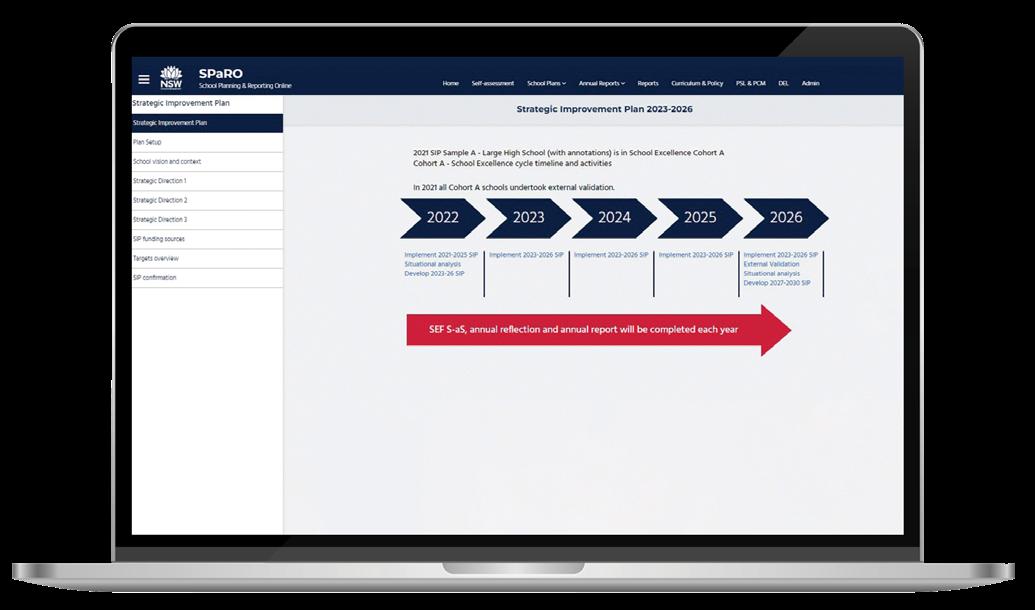
Consolidated
Note: Adapted from information provided by the NSW Department of Education.
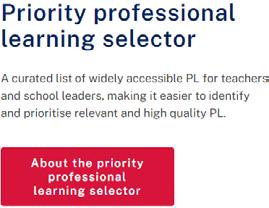
School-to-school collaboration

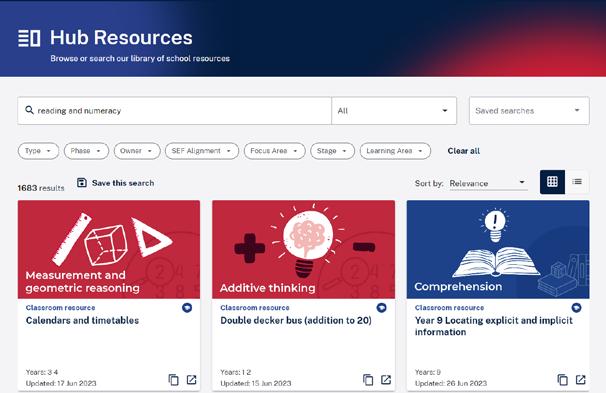

Many factors influence how a policy unfolds in practice. The implementation process may initially rely on existing educational governance and institutional settings, available capacity and the current policy environment. But it may progressively shape these elements to reach the reform objectives (OECD, 2020[14]). Policies are not designed in a vacuum, and they have to articulate with an existing policy framework. Complementary policies support the successful implementation of a new policy, while policy contradictions may challenge this (OECD, 2020[75]; Vanheukelom, Mackie and Ronceray, 2018[207]). Other factors influencing successful implementation of education policies in many OECD Member countries are staff shortages and
There is a need to continue and expand efforts to work towards greater policy coherence, in other words, to align education policies and tools so that efforts in one policy area do not undermine efforts in another area and may even reinforce them (OECD, 2020[75]; Vanheukelom, Mackie and Ronceray, 2018[207]; Viennet and Pont, 2017[13]).

workload challenges. It is essential to attract, retain and develop high-quality education professionals to achieve both short- and long-term success in policy implementation, and ultimately to ensure that all students reach their full potential (OECD, 2020[164]; Schleicher, 2018[208]).
This final section of the report examines the “conduciveness” of the environment in which education reforms are being implemented in New South Wales (Australia). It examines the key factors of influence and offers concrete recommendations to support successful implementation of DoE school improvement reform.
This report has identified several examples of policy incoherence, overlap or lack of co-ordination between the SSM and other DoE policies and programmes and has identified some concrete opportunities for improvement.
The large volume of policy initiatives puts at risk successful implementation and may lead to “reform fatigue”. The evidence suggests that NSW
public schools are challenged in their capacity to implement the policies and reforms that the DoE has embarked on in recent years, particularly because there have been so many of them. Stakeholder interviews revealed that the large number of reform programmes and policies and often short time spans for implementation may lead to schools only partially implementing them or simply ignoring them. Interviews with DoE officers revealed full recognition and understanding of these challenges and, importantly, a desire to strive for greater policy coherence across the DoE. The DoE has initiated several measures to realise this objective.
It is important to develop a vision for change to guide all improvement efforts and bring greater policy coherence. As mentioned earlier, the OECD team found that there is currently no overall vision for change for the SSM and the education sector at large. The DoE should consider formulating such a vision for change to guide all improvement initiatives, aimed at empowering schools to put the new curriculum into practice. This could be an important opportunity for the DoE to engage the education profession and other stakeholders in defining this vision.
There is a need to strengthen the school improvement support structure to ensure a “whole school approach”.
The DoE should, as planned, look at the school improvement structure that is currently given shape through several meso-level system leaders. A point of attention should be a reflection on the roles and responsibilities of the DELs. One option could be to “split” them, for example by dropping the line-manager role and focussing fully on the much-needed task of supporting schools in their improvement efforts, as well as possibly adjusting the number of schools covered by each DEL.
It appears that there may not be sufficient systemwide capacity to support schools in the areas of pedagogy, curriculum and assessment, a question that is particularly pertinent in light of the curriculum reform New South Wales has embarked on. The evidence suggests that this has led to a deficit of guidance and support for pedagogy and curriculum programming, particularly in non-urban and rural schools for which access to these specialised staff is more challenging.
The OECD team has noted the partially untapped potential of promoting school-to-school collaboration, but learned how some schools have engaged universities to draw from their expertise and capacities (for example, innovative pedagogies, research and inquiry).
The OECD team also recognises the School Support Delivery Framework (NSW Government, 2022[68]) as a promising policy initiative, where the private sector can offer support. That said, the new curriculum brings some fundamental changes to teaching and student learning that provide further impetus for examining whether this specific expertise is available in sufficient numbers to ensure that all schools that need it (as identified by the SEF-based school selfevaluation and external validation process) can benefit from it.
Recruiting, retaining and developing a highquality education workforce is a prerequisite for every education system.
Teacher shortages have an impact on all students, particularly those from low socio-economic backgrounds and with special education needs. Although a lack of sufficient teachers and school principals is not new in the international context, concerns about present and future shortages remain in many countries and jurisdictions (Schleicher, 2021[148]), including New South Wales.
The NSW public school system faces challenges in terms of staff shortages, with retirements outpacing recruitments. Teacher-supply challenges are particularly prevalent in schools with lower socioeconomic status and schools in rural and remote areas whose students’ average performance is below that of their peers in schools in urban areas (NSW Government, 2020[211]; NSW Government, 2021[6]).
There is a need to enhance working conditions. During the drafting of this report, a dispute was ongoing between the NSW Government and the teacher unions, partly in response to the heavy workload and concerns regarding staff well-being concerns. Salaries were also an issue, as teacher pay did not increase in line with other professions requiring similar qualifications (Rorris, 2021[48]; Parliament of New South Wales, 2022[64]; NSW Government, 2022[213]).
As in many OECD countries, the challenge of present and future staff shortages was and is high on the education reform agenda of the NSW Government. The DoE has taken several measures, including the Quality Time Action Plan (NSW Government, 2021[69]) and the DoE Teacher Supply Strategy (NSW Government, 2021[6]). Another recent example was the Rewarding Excellence in Teaching (REIT) reform announced in August 2022 (NSW Government, 2022[222]). This reform would also seem vital for successful implementation of the school improvement reform.
That said, the OECD team was surprised to find that the reform fails to take into account the large numbers of teachers on temporary contracts (Parliament of New South Wales, 2022[64]). The reform should explore options for facilitating their advancement to permanent positions.

Continued engagement with the education profession and other stakeholders is important
to ensure successful implementation of the school improvement reform and the larger reform agenda.
As this report was being finalised, the DoE was engaged in a series of consultations with the education profession and other stakeholders on a range of policy initiatives and reforms. It was apparent to the OECD team that these consultative efforts were bearing fruit, as they were providing the DoE with much-needed feedback and expertise to further enhance the design of these policies and reforms and to support successful implementation.
The OECD team would like to reiterate the importance of and express its appreciation for the DoE’s commitment to engagement with the education profession and other stakeholders to enhancing the design and implementation of the SSM, which was already being updated and expanded into a comprehensive school improvement reform strategy as this report was being prepared.
· The DoE should continue its efforts of working towards greater policy coherence. Realising this objective will take time and a sustained commitment not only by DoE, but all education stakeholders.
· One key means for moving towards greater policy coherence is through the development of a vision for change to guide all improvement initiatives towards. Possible starting points could be the Alice Springs (Mparntwe) Education Declaration (the Declaration) and the Curriculum Review. The DoE could seek the views of the NSW education profession and other stakeholders to reflect on these starting points and work towards developing a shared vision for change to direct all improvement initiatives towards.
· The DoE should – as planned – use the initiated development of new Strategic Plan and the internal reflection on its business processes for catalysing ongoing efforts to work towards greater policy coherence, including by consolidating DoE policies, while streamlining its operations. Again, collaboration with the education profession and other stakeholders, like the New South Wales Education Standards Authority (NESA) and the teacher unions, will be essential for enhancing policy coherence, as may it contribute to building trust.
· The NSW Government should strengthen its school improvement support structure to ensure a “whole school approach”
Building on the findings and recommendations of the recent review of student well-being services this includes:
◦ Reviewing the job descriptions of Directors, Educational Leadership (DEL) and other meso-level system leaders to ensure they are further empowered to focus on their improvement function,
along with a more balanced focus on accountabilities
◦ Consideration should be given to the double role of DELs. An option could be to “split” these, for example by giving up their line manager role and focussing fully on the much-needed task of supporting schools in their improvement efforts. Such a consideration should of course be made in relation to the roles and responsibilities of other system leaders.
◦ Adjustments in numbers of schools for which DELs are responsible may be needed. These could be informed by a more tailored approach based on schools’ developmental stage and support needs, as well as geographical considerations of course. The school selfevaluation and Strategic Improvement Plan, the external validation process, and the (proposal for a) corresponding School Support Delivery Framework categorisation provide valuable means for making possible adjustments.
◦ A key question to examine is whether there is sufficient systemwide capacity to support schools in the areas of pedagogy, curriculum and assessment; a question that is particularly pertinent in light of the curriculum reform New South Wales has embarked on
◦ The DoE should mobilise the partially untapped potential of systematically promoting school-to-school collaborations
· The Rewarding Excellence in Teaching (REIT) reform should continue to be pursued and prioritised by the NSW Government in the coming years for it
to be able to recruit, retain and develop sufficient numbers of high-quality education professionals to serve the learning and well-being needs of a growing student population.
◦ The DoE should consider expanding the REIT reform with an explicit focus on temporary teachers. The reform should explore options for facilitating their advancement to permanent positions.
· The DoE should continue and where possible expand its communications on the importance and good/excellent work of the NSW education profession. This includes identifying and publicly celebrating excellent teachers, “good practices” and successful examples of schools’ “improvement journeys” that can
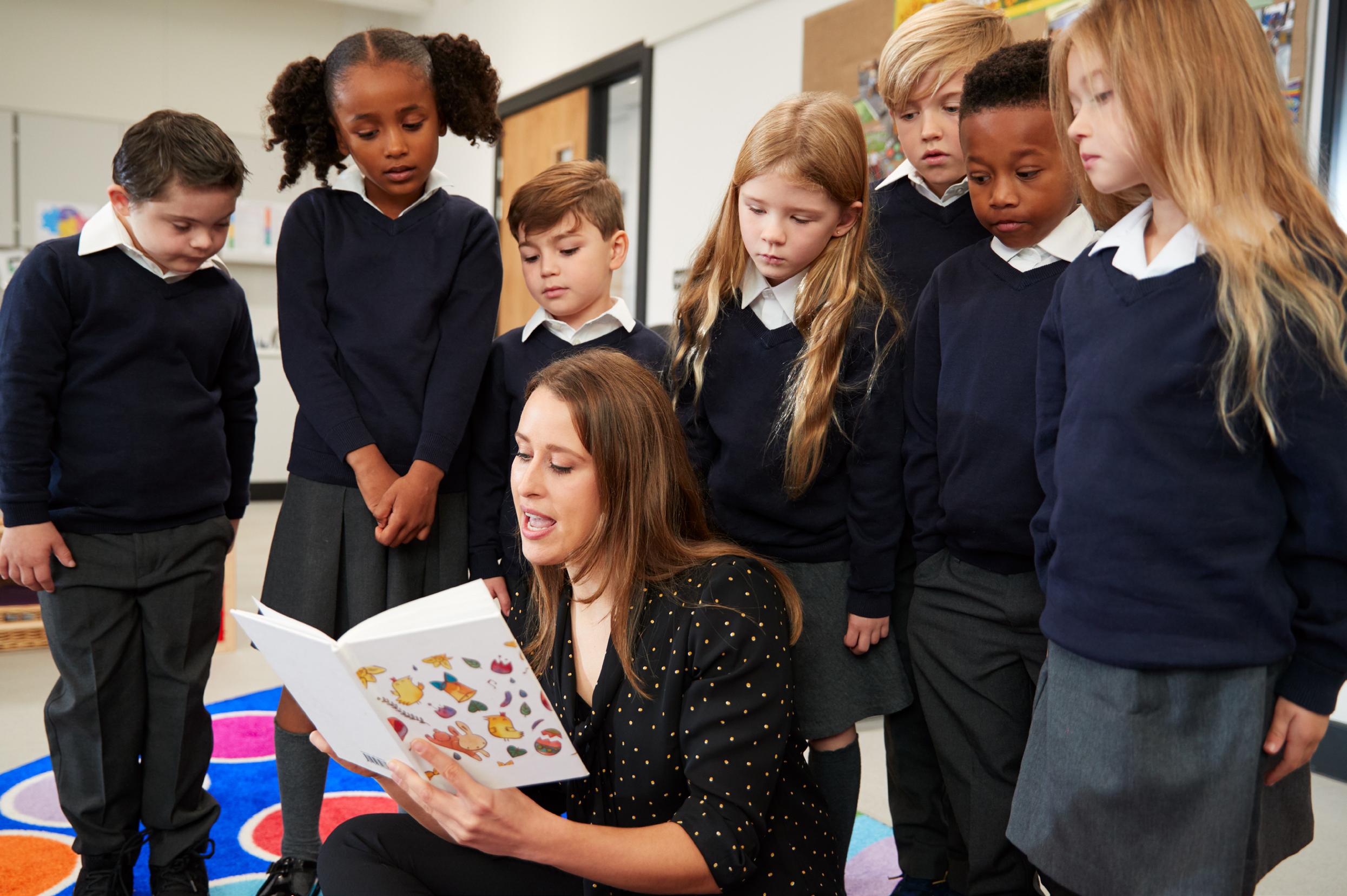
inspire and inform educational change and innovation in other schools.
· As planned, the DoE should continue the engagement and constructive dialogue with the education profession and other education stakeholders to ensure the successful implementation of the DoE school improvement reform. This includes – as planned – engaging the education profession and other stakeholders in the development of the school improvement reform to support the timely identification of implementation challenges and finding of suitable solutions, as well as the public celebration of realising key milestones and “good practices” that can inspire and inform further educational change and innovation across the NSW public school system.
ACARA (2020), Measurement Framework for Schooling in Australia, https://acara.edu.au/docs/default-source/default-document-library/measurement-framework-2020-amendedmay-12-2022.pdf?sfvrsn=4ddc4c07_0
AITSL (2014), Australian Professional Standards for Principals and the Leadership Profiles, Australian Institute for Teaching and School Leadership (AITSL).
Burns, T. and F. Köster (2016), Governing Education in a Complex World, OECD Publishing, https://doi.org/10.1787/9789264255364-en
Copp, D. (2018), “Teaching to the test: a mixed methods study of instructional change from large-scale testing in Canadian schools”, Assessment in Education: Principles, Policy & Practice, pp. 468-487, https://doi.org/10.1080/096959 4X.2016.1244042
Darling-Hammond, L. (2020), “Accountability in Teacher Education”, Action in Teacher Education, pp. 60-71, https://doi.org/10.1080/01626620.2019.1704464
Darling-Hammond, L. et al. (2020), “Implications for educational practice of the science of learning and development”, Applied Developmental Science, pp. 24:2, 97-140, https://doi.org/10.1080/10888691.2018.1537791
Education Council (2019), Alice Springs (Mparntwe) Education Declaration, Education Council.
European Commission (2017), Quality of Public Administration. A Toolbox for Practitioners., https://ec.europa.eu/esf/BlobServlet?docId=18587&langId=en
Fullan, M. (2011), Choosing the wrong drivers for system reform, Centre for Strategic Education, https://doi. org/10.17323/1814-9545-2011-4-79-105
George, B. et al. (2021), “Red Tape, Organizational Performance, and Employee Outcomes: Meta-analysis, Metaregression, and Research Agenda”, Public Administration Review, https://doi.org/10.1111/puar.13327
King Smith, A., K. Watkins and S. Han (2020), “From silos to solutions: How one district is building a culture of collaboration and learning between school principals and central office leaders”, European Journal of Education, pp. 58-75, https://doi.org/10.1111/ejed.12382
Kools, M. and L. Stoll (2016), “What Makes a School a Learning Organisation?”, OECD Education Working Papers, No. 137, OECD Publishing, https://doi.org/10.1787/5jlwm62b3bvh-en
Kuipers, B. et al. (2014), “The Management of Change in Public Organisations”, Public Administration,, pp. 1-20, https:// doi.org/10.1111/padm.12040
Leithwood, K. and K. Seashore Louis (2012), Linking Leadership to Student Learning, Jossey Bas.
Masters, G. (2020), Nurturing wonder and igniting passion. Designs for a new school curriculum. NSW Curriculum Review, NSW Education Standards Authority, https://research.acer.edu.au/nswcurriculumreview/6/
May, P. (2015), “Implementation Failures Revisited: Policy regime perspectives”, Public Policy and Administration, pp. 277-299, https://doi.org/10.1177/0952076714561505
McConnell, A. (2018), “Rethinking wicked problems as political problems and policy problems”, Policy & Politics, pp. 165-180, https://doi.org/10.1332/030557317X15072085902640
Nielsen, M. et al. (2017), Administrative Burden Reduction Over Time: Literature Review, Trends and Gap Analysis, http:// dx.doi.org/10.1145/3047273.3047334
NSW Education Standards Authority (2022), NSW Curriculum Reform, https://nswcurriculumreform.nesa.nsw.edu.au/home/siteAreaContent/adbaffbc-6ac9-46fc-9b2d-65fcc8bc9064 (accessed on 1 August 2022).
NSW Education Standards Authority (2022), Our Story, https://www.educationstandards.nsw.edu.au/wps/portal/nesa/about/who-we-are/our-story (accessed on 1 August 2022).
NSW Education Standards Authority (2022), The Standards, https://educationstandards.nsw.edu.au/wps/portal/nesa/teacher-accreditation/meeting-requirements/the-standards (accessed on 1 August 2022).
NSW Government (2022), Aboriginal Education Policy, https://education.nsw.gov.au/policy-library/policies/pd-2008-0385 (accessed on 20 October 2022).
NSW Environment Protection Authority (2021), NSW State of the Environment 2021 (SoE 2021), https://www.soe.epa. nsw.gov.au/all-themes/drivers/population (accessed on 15 October 2022).
NSW Government (2022), About the School Excellence Framework, https://education.nsw.gov.au/teaching-and-learning/school-excellence-and-accountability/sef-evidence-guide/ resources/about-sef (accessed on 1 July 2022).
NSW Government (2022), About the School Leadership Institute, https://education.nsw.gov.au/teaching-and-learning/school-leadership-institute/about-the-sli#Vision0 (accessed on 22 September 2022).
NSW Government (2022), Department of Education - About us, https://www.nsw.gov.au/department-of-education#:~:text=The%20NSW%20Department%20of%20Education,of%20 the%20NSW%20student%20population. (accessed on 30 July 2022).
NSW Government (2022), Inquiry into teacher shortages in New South Wales - Submission No. 109, https://www. parliament.nsw.gov.au/lcdocs/submissions/79429/0109%20NSW%20Government.pdf (accessed on 1 November 2022).
NSW Government (2022), Key facts about NSW, https://www.nsw.gov.au/about-nsw/key-facts-about-nsw (accessed on 12 August 2022).
NSW Government (2022), NSW Department Organisational Chart, https://education.nsw.gov.au/content/dam/main-education/about-us/our-people-and-structure/media/documents/ Department-of-Education-Organisational-Chart.pdf (accessed on 20 June 2022).
NSW Government (2022), Principals, School Leadership, https://education.nsw.gov.au/teaching-and-learning/professional-learning/pl-resources/principal-school-leadership (accessed on 25 September 2022).
NSW Government (2022), Rewarding Excellence in Teaching - Position Paper [222] NSW Government (2022), School leadership development strategy, https://education.nsw.gov.au/teaching-and-learning/school-leadership-institute/about-the-sli/strategy (accessed on 13 January 2023).
NSW Government (2022), School Success Model, https://education.nsw.gov.au/public-schools/school-success-model/ school-success-model-explained (accessed on 6 June 2022).
NSW Government (2022), Schooling in NSW, https://educationstandards.nsw.edu.au/wps/portal/nesa/parents/parentguide/schooling-in-nsw (accessed on 2 September 2022).
NSW Government (2022), Statement on today’s teachers strike, https://education.nsw.gov.au/news/latest-news/ statement-on-today-s-teachers-strike (accessed on 21 August 2022).
NSW Government (2021), Connected Communities Strategy, https://education.nsw.gov.au/public-schools/connectedcommunities/connected-communities-strategy#History0 (accessed on 10 August 2021).
NSW Government (2021), NSW Teacher Supply Strategy, https://education.nsw.gov.au/about-us/strategies-and-reports/teacher-supply-strategy.
NSW Government (2021), Outcome and Business Plan 2021/22, New South Wales Department of Education.
NSW Government (2021), Quality Time. Action plan to simplify adminstrative practices in schools, NSW Department of Education, https://education.nsw.gov.au/content/dam/main-education/about-us/strategies-and-reports/media/documents/ Action_Plan_Quality_Time.pdf (accessed on 21 June 2022).
NSW Government (2021), Rural and remote education strategy, NSW Government, https://education.nsw.gov.au/about-us/strategies-and-reports/rural-and-remote-education-strategy-2021-24/aboutthe-strategy (accessed on 21 June 2022).
NSW Government (2021), Schools and students: 2021 statistical bulletin, NSW Government, https://data.cese.nsw.gov.au/data/dataset/schools-and-students-statistical-bulletin (accessed on 6 September 2022).
NSW Government (2021), The School Success Model: Building on the Local Schools, Local Decisions reform, New South Wales Department of Education, https://education.nsw.gov.au/content/dam/main-education/en/home/public-schools/school-success-model/TheSchool-Success-Model.pdf (accessed on 23 June 2022).
NSW Government (2020), Evaluation of the rural and remote education blueprint – Final report
NSW Government (2020), Footprints to the future, NSW Government, https://education.nsw.gov.au/teaching-and-learning/aec/policy-strategy-and-business-systems (accessed on 15 August 2022).
NSW Government (2020), Local Schools, Local Decisions - Evaluation Final Report, Centre for Education Statistics and Evaluation, https://education.nsw.gov.au/about-us/educational-data/cese/evaluation-evidence-bank/reports/local-schools-localdecisions-evaluation-final-report (accessed on 2022 July 2022).
OECD (2020), “An implementation framework for effective change in schools”, OECD Education Policy Perspectives, No. 9, OECD Publishing, Paris, https://dx.doi.org/10.1787/4fd4113f-en
OECD (2020), Policy Framework on Sound Public Governance: Baseline Features of Governments that Work Well, OECD Publishing, https://doi.org/10.1787/c03e01b3-en
OECD (2020), TALIS 2018 Results (Volume II): Teachers and School Leaders as Valued Professionals, TALIS, OECD Publishing, https://doi.org/10.1787/19cf08df-en
OECD (2019), Education Policy Outlook 2019: Working Together to Help Students Achieve their Potential, OECD Publishing, Paris, https://doi.org/10.1787/2b8ad56e-en
OECD (2019), PISA 2018 Results (Volume I): What Students Know and Can Do, OECD Publishing, Paris, https://doi. org/10.1787/5f07c754-en
OECD (2019), Policy coherence for sustainable development 2019: Empowering people and ensuring inclusiveness and equality, OECD Publishing, https://doi.org/10.1787/a90f851f-en
OECD (2018), Developing Schools as Learning Organisations in Wales, OECD Publishing, https://doi.org/10.1787/9789264307193-en
OECD (2015), Schooling Redesigned: Towards Innovative Learning Systems, Educational Research and Innovation, OECD Publishing, https://doi.org/10.1787/9789264245914-en
OECD (2013), Synergies for Better Learning: An International Perspective on Evaluation and Assessment, OECD Publishing, https://www.oecd.org/education/school/synergies-for-better-learning.htm#conclusions.
OECD (2012), Equity and Quality in Education: Supporting Disadvantaged Students and Schools, http://dx.doi. org/10.1787/9789264130852-en
Parliament of New South Wales (2022), Teacher shortages in New South Wales, https://www.parliament.nsw.gov.au/committees/inquiries/Pages/inquiry-details.aspx?pk=2882 (accessed on 30 August 2022).
Parliament of NSW (2022), Levels of government in Australia, https://www.parliament.nsw.gov.au/about/Pages/Levels-of-Government-in-Australia.aspx#:~:text=Almost%20 everywhere%20you%20live%20in,people%20they%20provide%20government%20for (accessed on 28 September 2022).
Peckham, S., B. Hudson and D. Hunter (2021), “Policy success: What is the role of implementation support programmes?”, Social Policy & Adminstration, pp. 1-16, https://doi.org/10.1111/spol.12771
Robinson, V., M. Hohepa and C. Lloyd (2009), School Leadership and Student Outcomes: Identifying What Works and Why, Minsitry of Education New Zealand.
Ro, J. (2019), “Learning to teach in the era of test-based accountability: a review of research”, Professional Development in Education, pp. 87-101, https://doi.org/10.1080/19415257.2018.1514525
Rorris, A. (2021), NSW public schools to 2036: Impact of enrolment growth on demand for teachers in local governmnent schools, NSW Teachers Federation, https://www.nswtf.org.au/files/rorris-report_2.pdf
Schleicher, A. (2021), Learning from the past, looking to the future: Excellence and equity for all , International Summit on the Teaching Profession, OECD Publishing, https://doi.org/10.1787/f43c1728-en
Schleicher, A. (2018), Valuing our Teachers and Raising their Status: How Communities Can Help. International Summit on the Teaching Profession, OECD Publishing, https://doi.org/10.1787/9789264292697-en
Schleicher, A. (2018), World Class: How to build a 21st-century school system, OECD Publishing, https://doi. org/10.1787/9789264300002-en
Spillane, J., M. Hopkins and T. Sweet (2018), “School district educational infrastructure and change at scale: Teacher peer interactions and their beliefs about mathematics instruction”, American educational research journal, pp. 532-571, https://doi.org/10.3102/0002831217743928
Thomson, S. et al. (2019), PISA 2018: Reporting Australia’s Results. Volume I Student Performance, ACER, https://research. acer.edu.au/cgi/viewcontent.cgi?article=1035&context=ozpisa
Thomson, S. et al. (2020), PISA 2018: Reporting Australia’s Results. Volume II Student and School Characteristics, https:// research.acer.edu.au/cgi/viewcontent.cgi?article=1050&context=ozpisa (accessed on 10 December 2022).
UNESCO (2015), Student Learning Assessment and the Curriculum: issues and implications for policy, design and implementation, UNESCO Publishing.
Van Twist, M. et al. (2013), Coping with very weak primary schools: towards smart interventions in Dutch education policy. OECD Education Working Papers, No. 98, OECD Publishing, https://doi.org/10.1787/5k3txnpnhld7-en
Vanheukelom, J., J. Mackie and M. Ronceray (2018), Good Enough Coherence, OECD Publishing, http://dx.doi. org/10.1787/9789264301061-en
Viennet, R. and B. Pont (2017), Education Policy Implementing: A Literature Review and Proposed Framework, OECD Publishing, https://dx.doi.org/10.1787/fc467a64-en
Photo credits:
Cover © Monkey Business Images/Shutterstock.com; © Rawpixel.com/Shutterstock.com; © sirtravelalot/Shutterstock.com
Page 3 © Monkey Business Images/Shutterstock.com
Page 4 © Monkey Business Images/Shutterstock.com
Page 7 © Monkey Business Images/Shutterstock.com
Page 9 © Monkey Business Images/Shutterstock.com
Page 12 © Monkey Business Images/Shutterstock.com
Page 14 © Monkey Business Images/Shutterstock.com
Page 15 © Rawpixel.com/Shutterstock.com
Page 16 © Monkey Business Images/Shutterstock.com
Page 18 © Monkey Business Images/Shutterstock.com
Page 23 © Monkey Business Images/Shutterstock.com
Page 24 © Monkey Business Images/Shutterstock.com
Page 26 © Rawpixel.com/Shutterstock.com
Page 28 © Monkey Business Images/Shutterstock.com
For more information on Enhancing school improvement reform in New South Wales (Australia), access the full list of resources: https://doi.org/10.1787/36135b5b-en
This work is published under the responsibility of the Secretary-General of the OECD. The opinions expressed and arguments employed herein do not necessarily reflect the official views of the Member countries of the OECD. This document, as well as any data and map included herein, are without prejudice to the status of or sovereignty over any territory, to the delimitation of international frontiers and boundaries and to the name of any territory, city or area.
The use of this work, whether digital or print, is governed by the Terms and Conditions to be found at: www.oecd.org/termsandconditions